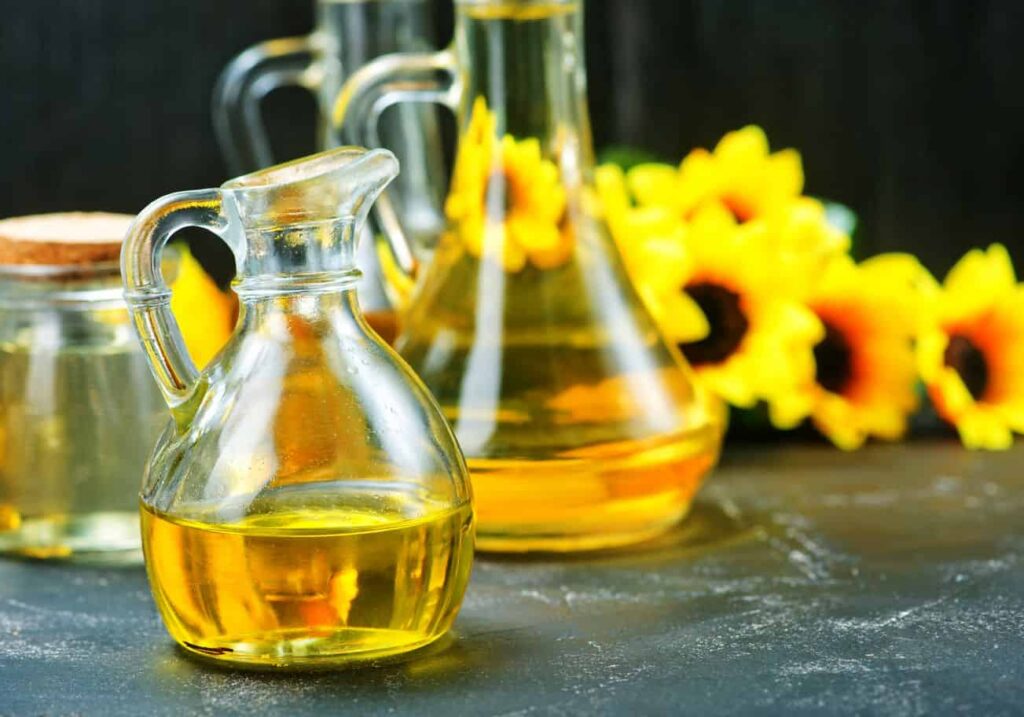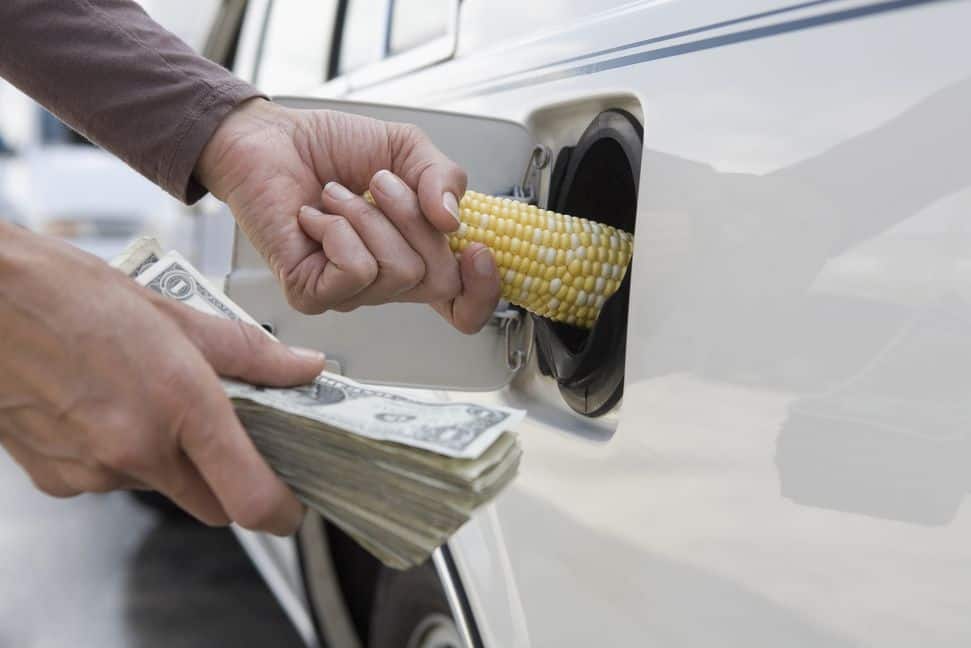2 January 2020 Concept Car
Why aren’t we all driving on biofuel already? With the undeniable technological progress we’ve made, It seems such a straight-forward question. In truth, few products are more complex than biofuels. Even after decades of looking for and trying out alternatives to petrol, we still don’t know how they measure up in terms of efficiency and ecological impact.
With the world at the brink of an ecological collapse, that is bad news.
Thankfully, over the past years, even car manufacturers have realised the gravity of the situation. Today, brands like Audi are target=”_blank”actively pushing research into alternative fuel sources and biofuels. Partly thanks to their efforts, we now have a far better picture of the pros and cons of biofuel and biodiesel.
In this overview, we’ll bring you up to speed on the current debate. We’ll explain the benefits and disadvantages of ethanol and biodiesel. We’ll take a look at how they compare to batteries. Finally, we’ll explicate the production process. And we’ll take an outlook at what the future might hold in store.
Biofuel: Definition
Biofuel: Ethanol
Fats
Straight Vegetable Oil
True Biodiesel
Waste Vegetable Oil
Easy to produce
Biofuel: Letting the Microbes Work
Biodiesel & Biofuel: Pros
Cons
The Future
The ecologic question remains unclear
How to make the switch
There is no single definition of what constitutes a biofuel. It is not (yet) a protected or copyrighted term and can mean a variety of things. In general, however, it is understood that a biofuel is:
a source of energy for cars, trucks or other machinery that is taken from renewable, i.e. non-fossil biomass.
A biofuel is therefore not, by definition, more environmentally friendly than petrol. The biomass used for its production doesn’t even need to be ‘organic’. Rather, what sets it apart is that the biomass used to generate it will not run out (at least not in the short term).
Or to put it differently: Once we’ve dug up all the oil, that’s it. Once we’ve used up our current supply of biomass, we can simply plant more of it.
Even though there are a multitude of potential approaches to producing biofuel, most of today’s supply consists of processed ethanol. In practise, this means that biofuel is generated from fermenting carbohydrate rich plant matter.
This is not a new idea. In fact, in Brazil, cars have driven on alcohol for decades. As more and more drivers around the world are starting to become interested in the concept, things have become more complicated.
For one, producers need to satisfy a far higher demand than ever before. As we’ll see later on in this report, this has not been without its problems. And secondly, biofuel is currently neither the most efficient nor the most ecological fuel. This seriously puts its meaningfulness under question.
Biofuel does however make for an excellent additive to regular petrol. Most UK filling stations actually add a bit of ethanol to their fossil fuels. Names you may recognise them by are E5 or E10 (meaning: 5% or 10% ethanol).
Whereas biofuel is based on alcohol and sugar, biodiesel makes use of another macro nutrient to power your engine: Fats. This is an exciting proposition and may help the diesel make yet another amazing comeback.
Just like biofuels are a time-tested concept, so are biodiesels. In fact, already Rudolf Diesel himself used peanut oil in his engines!
There are three different types of biodiesels: True biodiesel, waste vegetable oil (also sometimes abbreviated to WVO) and straight vegetable oil (SVO). To simplify things, we will use the term biodoesel for all three. But be aware that they do have slightly different properties.

Biofuel and biodiesel are closely connected to human nutrients. Little wonder then, that you can now almost literally toss your dressing into your tank rather than on your salad. Peanut oil is no longer a particularly popular option, but there are plenty other oils which can be used – including canola, rape seed and soy among others.
Straight vegetable oil is thicker than regular petrol. This makes it hard to start up your car with it. To make it work, the car will have to be adjusted – we’ll get into the details of that later on.
Driving with SVOs requires upgrading your car. True biodiesel doesn’t, because it adds a few helpful ingredients to the recipe. These turn the liquid less viscuous and syrupy. Thus, it can be used in a wider range of engines and its qualities are closer to those of standard fossile-fuel petrol.
Technically speaking, biodiesel could simply be processed using SVO as a point of departure. In practise, other plants have proven to be better starting points. One of them is Jatropha. It is easy to grow and produces fruit with a high oil content. Read more about it on the Renewable Energy Website.
Among the most popular providers of raw biodiesel are restaurants. Until recently, they had to pay a lot of money to have used oil from frying removed and disposed of. Suddenly, they can charge high prices to have it collected and re-used.
Forbes writes:
“The unrefined, raw material alone is now referred to as “liquid gold,” fetching over $3 per gallon in New York City (…). Because of the rising value, theft and “black market” selling have followed: only 30% of waste grease in New York City is picked up by licensed collectors.”
In many respects, biodiesel is currently the most promising alternative fuel source – although, as so many other things in this industry, this is subject to constant, almost day-to-day change.
The production of biodiesel is a lot easier than the production of biofuel. Used oil from restaurants may not be cheap, but it is easy to come by and an excellent source. As more and more restaurants across the world participate in the process, supply should increase and prices should drop. And if Forbes is right and only 30% of the current oils are actually collected by biodiesel producers, then the potential for growth is tremendous.
As we’ve mentioned, biodiesel needs to be processed before it can be used in cars. Otherwise, you’d be sending all those residues from potato chips and burgers straight into the air. To achieve this, all restaurant oils are filtered several times before they are being sold. And even then, “after the oil has been manually filtered and added to the auxiliary fuel tank, it will typically be filtered at least one more time through an in-line filter that you need to install in the system.”
Of course, total demand can never be met purely by collecting used oil. So part of the market will have to come from vegetable oils. Although these are still in many respects a better proposition than biofuels from ethanol, they share some of the latter’s cons. There’s no free lunch, unfortunately.

The production process for biofuels is more laboursome and time-consuming compared to biodiesels. Ethanol is produced by allowing biomass to ferment, similar to the production process for wine or beer. There are various potential sources for this: grains, various plants and algae. In short: Sugars and starches.
Scientists are already working on techniques to expand this to fibrous materials, such as the stems and leaves of plants. This would make the process significantly less wasteful.
Before biomass can be generated, the plants first need to be ‘crushed’. The word sounds drastic and so is the process, with vast amounts of soy or corn being pulverised or turned into briquettes. These can then be processed even more until they are refined enough to be used as fuel.
Another option is to subject the material to high temperatures and make it gaseous. Using further chemical processes, this gas can then be turned into ethanol.
Both biofuel and biodiesel have come under criticism. We’ll turn towards the main issues in a second. First, however, it’s important to emphasise that both these alternative fuels also have plenty of benefits:
One of the main gauges for measuring the ecological impact of a fuel is its efficiency. Petrol may look like a terribly toxic fuel source, for example, but the product itself and the infrastructure that has grown around it have made it extremely efficient.
Engines put every drop of fuel to good use. Fuels are blended with additives to make them more powerful and to protect engines. Cars have become more aerodynamic. Oil refineries operate highly efficiently and pipelines form a fantastic, globe-spanning transportation network.
The crushing process used for biofuels is anything but efficient. What’s more, there are far too few crushing plants to meet the demand. Similarly, huge amounts of biomass are required to produce even the tiniest amounts of fuel. This fuel, in turn, holds a far smaller energetic load than petrol, further reducing efficiency.
Finally, biofuels tend to be corrosive. This makes them presently unfit for use in pipelines. It also means that you will need to adjust your car if you want to switch to biofuels. Biofuels need to be transported using trains and trucks and this further increases costs. As Forbes estimates, “it can take 18 megajoules of fossil energy to make just one liter of soybean-based biodiesel – that equates to half a liter of gasoline.”

All around the world, thousands of people are dying every day because of hunger. The source material for many biofuels are potentially edible plants. These plants need to be grown on farmland that could otherwise be used to produce food. This creates a sociopolitical tension that is not just hard to resolve but actually explosive in its implications.
What’s more, it is an issue plaguing both biofuels and biodiesels, as both are ultimately produced using plant matter.
So far, the consequence of the global increase in biofuel has been a palpable rise in costs for staple foods. Again, Forbes has the numbers to illustrate this claim:
“FarmEcon finds that with mounting ethanol production and mandates since 2006 food prices have sharply risen, and the typical American family of four has been paying $2,055 more in food bills than would have been the case if costs had kept to the 1950-2005 trend line. Over 40% of U.S. corn is used to produce ethanol, which has trickled down to cause riots in Mexico City, as one example, over higher costs for tortillas.”
It won’t be long before this problem trickles over to the UK as well.
The ecological impact of alternative fuel sources is important. However, there is little benefit in biofuel if no one can afford it. At the moment, prices are still so high that they make it exceedingly hard for an average UK household to support them.
This may seem strange, as biofuel is cheaper on paper. However, since its efficiency is lacking, you will need to use more of it. As experts have demonstrated, this will usually make it more expensive than petrol.
You can make petrol more efficient by gently changing the recipe (see our special on premium petrol here). You can also make petrol run cars more efficient by improving their engines and aerodynamics. Biodiesel and biofuel, however, are not part of this evolutionary transformation towards more efficiency in cars. They are veritably different systems and potential game changers.
While this is good in many respects, it spells trouble for the early phase of their market entry. Right now, the most serious issue for early adopters is how to actually get the fuel into their tank. In the UK, there are virtually no pumps selling biodiesels anymore. In the US, the situation is equally dire, with just 1% of all gas stations offering ethanol.
Your best bet for getting the stuff is the web – which is highly unpractical if you’re driving a lot of miles.
The situation for biodiesel is a lot better and improving. But here, too, you’re at the mercy of gas station operators. Electricity is ironically easier to obtain. But it can take hours to recharge the vehicle. This obviously presents problems of its own.
As we’ve hinted before, methanol can cause severe damage to many parts of your car. A petrol engine can not simply use biofuel, it is capable of handling very specific types of fuel only. Unless you already own a ‘Flex-Fuel Vehicle’, which allows you to use different fuels, you will therefore need to convert your car.
In comparison, most diesel engines should already be able to run on biodiesel. In fact, diesel engines are designed to handle many different fuel sources. Petrol just happened to be the most popular (and probably the most efficient, too). Which explains why you can find plenty of instructions online about how to make your diesel run on cooking oil.
This statement does come with a few caveats. Most importantly, vegetable oils are solid at low temperatures. So you need to pre-heat them if you intend to drive in the Winter time. Since doing this manually is extremely impractical, installing a device capable of handling this seems like a good idea.

Obviously, there is still a big elephant in the room. After all, the real reason we’re putting fat and alcohol in our tank is not because we’ve all suddenly developed an aversion to fries and beer. Rather, the point behind biofuel is to avoid the destructive impact that fossil fuels have on our climate, our air and thus our sheer existence as human beings.
At the moment, the picture isn’t entirely clear yet. As we pointed out in #1, that biofuel and biodiesel are far from perfect when it comes to their efficiency. If they take up vital resources to produce and transport, this severely dimished their usefulness as more ecologically friendly petrol alternatives.
In many ways, too, things may not get much clearer soon. Some publications even claim that we may presently know next to nothing about the exact impact of these alternative fuel sources on the environment:
“Contrary to what we keep hearing, total life-cycle greenhouse gas emissions from biofuels are virtually impossible to measure. To illustrate, there is significant disagreement about the actual energy and greenhouse gas savings of biofuels displacing fossil fuels, and a “a large number of publications that analyze the life-cycle of biofuel systems present varying and sometimes contradictory conclusions, even for the same biofuel type.”
Does that mean we shouldn’t even try assessing these emissions? Hardly. What is important is that we stop pretending that we have all the answers and instead intensify our search for better ways to compare new and traditional energy sources.
So how can we move forward with biofuels and improve their undeniable potential? One of the most obvious next steps is to make the entire production process, from harvesting and crushing to fermenting and refining more efficient.
There need to be less financial incentives for the growing of biofuel crops and more incentives for their processing. The current number of crushing plants is brutally insufficient. Not only does this artificially raise prices . It also means the crops need to be transported across long distances, diminishing any potential climate impact they might have.
Even more importantly, the search for new biofuels needs to be intensified. Only if biofuels closely approximate the energy level of petrol will they be of interest to drivers. And only if the natural resources required for their production don’t take up any arable land, making food more expensive, will the public really rally behind them.
It is a good sign, therefore, that the search has already begun. Various studies suggest that the food versus fuel dilemma may actually resolve itself, since corn and soy may not be the best sources for biofuel anyway.
Writing for the Guardian, John Abraham sums up his findings:
“What we found, way back in 2009, is that if non-commercial crops were grown, you could actually end up with fuel that was significantly cleaner than petroleum. The trick was finding clean crops that don’t need a lot of fertilizer, water, and other inputs. Corn ethanol for instance is not the best choice. You need so much water, fertilizer, and other costs, that it almost doesn’t make it worthwhile. But other crops such as switchgrass, grown on marginal lands, have real a [sic!] potential. Marginal lands are farmlands that are not optimal for growing crops.”
We currently don’t know yet when these second- and third-generation biofuels will become available. And yet, there is definitely hope the wait won’t last forever.

Brazil is a great case study when it comes to using biofuels on a larger scale. In the 1970s, the country’s economy (like so many others) was wholly dependent on petrol. When the OPEC cartel artificially raised prices, Brazil was on the verge of a breakdown.
Developing an alternative fuel source turned into a national priority. Ethanol seemed like the ideal solution, since Brazil already had vast sugar cane plantations which it could use to extract the sugar required for fermentation. Soon, ‘bio cars’ filled the streets in the big Brazilian cities, even though no one at the time ever used that term.
Oil prices eventually returned to their former levels and ethanol no longer seemed like a matter of national importance. Until this day, however, it has continued to play a small, albeit not entirely irrelevant role on the Brazilian market. Flex cars have allowed drivers to use both ethanol and petrol. And Brazil long developed a process to not just use sugar but almost the entire plant, as Ecowatch stresses:
“Enzymes are used to break down the cellulose in the bagasse (the fibrous waste of sugarcane, maize and rice). Productivity has been increased by 50 percent, producing 10,000 liters per hectare.”
But Brazil also presents a cautionary tale. Although it may seem as though it is placing great value on the ecology by supporting biofuel, a lot of the crops are planted on protected forest lands. Ironically, by supposedly protecting the environment, the government are actively destroying it.
We tend to see petrol and biofuels as two contradictory and mutually exclusive approaches:
This, however, isn’t even remotely true. As we’ve shown, many diesel engines can already use alternative fuels. As do many new petrol cars, which are also capable of running on bio fuels. The more we understand about how different fuels work, the more we can appreciate that we can put their differences to good use.
In fact, this is already happening!
Here are some examples of combining different fuel types for maximum performance:
These developments are not restricted to cars, either. Finnair recently announced that it would include biofuels in its airplane kerosene – a major signifier that things are on the move.
If you want to make the switch from petrol to a more sustainable fuel source, you have a choice between biofuel and electricity. Clearly, of the two, electricity is currently the hipper and more popular choice. Just look around you and you’ll see plenty of Smarts. And not a day goes by without an article discussing the merits of the Tesla. Converted biofuel vehicles are all but absent from the public debate.
But are electric cars really your best choice as a driver?
In terms of the ecology, the verdict isn’t entirely out yet. On the one hand, there are many arguments in favour of electric cars. Greentechmedia has listed an overview of the pros and cons of batteries versus biofuels, with electric cars surging ahead on most accounts. Generally speaking, second generation biofuels are hardly available outside of Brazil and biofuel is hard to come by in comparison. On the other hand, filling up a car with biofuel takes a lot less time and gets you further on one tank.

As the Efficient Life blog bluntly states:
“It seems obvious to a person of decent scientific intellect like myself that solar-electric cars are more efficient than bio-fuel cars.”
Many others have taken the same position. And yet, even the author of that quote had to admit that we’re still at the beginning of our analysis. Future studies will have to answer many more questions before we can say for sure which of the two is truly better.
For the moment, most experts therefore agree that, again, a combination of the two may be best. The Union of Concerned Scientists, for example, claims: “Cutting oil use and transportation emissions is a big job, that will require both electric vehicles and biofuels.” Dr. Heywood of MIT concurs, claiming that pure Plant Oil diesel / electric hybrids are optimal.
Have we convinced you of the benefits of biofuel and biodiesel? You want to contribute to a better world and make the switch? Great! Now all you need to do is figure out how to do it.
If you own a diesel, you should be able to use true biodiesel straight away. Never do this without running it by your trusted mechanic, however. True biodiesel is the most expensive fuel source, but it is also the easiest to use. Waste Vegetable oil in comparison is cheaper, but requires the most work on your end, since it still needs to be filtered.
With straight vegetable oil, you will have to upgrade your car. According to the Renewable Energy Website, there are three basic options:
If your mind is set on biofuel, there are a few things to consider:
In all of these cases, it really helps to talk to your mechanic and ask them about their opinion to be absolutely sure. You can’t help protect the environment with a broken car, after all.
2 January 2020 Concept Car